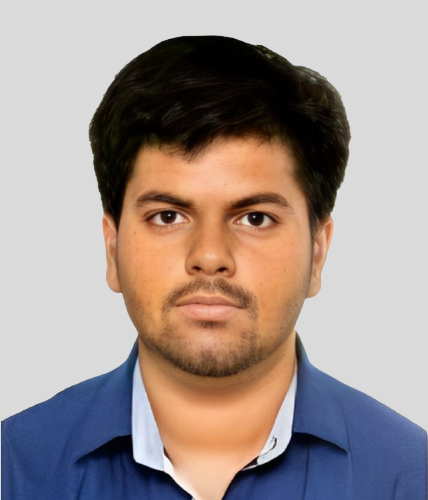More Seats, Same Problems: Can India’s Healthcare System Handle a Surge of New Medical Graduates?
Numbers can look impressive in press releases, but it is the lived experiences of patients and doctors that will ultimately decide whether this surge of graduates strengthens the system or simply swells its existing problems.
.jpeg)
The announcement of thousands of new medical seats across India has been welcomed with applause in many circles, as the government positions this expansion as a solution to the chronic shortage of doctors in the country. The Union Cabinet’s recent approval of Phase III of the Centrally Sponsored Scheme for new medical colleges has created a wave of optimism, particularly with the promise of more than five thousand new postgraduate seats and over five thousand new MBBS seats. On the surface, this sounds like the dawn of a brighter future where the doctor-patient ratio finally begins to match international standards and rural healthcare is no longer gasping for survival. Yet beneath the applause lies a nagging question that refuses to be silenced: will India’s healthcare system, already burdened by uneven infrastructure, insufficient faculty, and fragile support systems, be able to meaningfully absorb this sudden surge of medical graduates?
The truth is that creating seats is far easier than creating doctors who are equipped to practice medicine with competence and compassion. For decades, India has been trying to bridge the gap between population growth and healthcare availability, and every time more colleges are sanctioned, the headline figures create an illusion of progress. But in the wards of government hospitals where patients wait for hours to see a doctor, and in villages where a single physician covers the needs of thousands, the reality looks quite different. Merely increasing the intake of medical students without addressing the quality of teaching, the availability of mentors, the presence of infrastructure, and the prospects of gainful employment risks turning this ambitious plan into another numbers game.
Doctors across the country, especially those who have been in the system for years, understand this paradox too well. They know that the bottleneck is not at the entry point alone but stretches across the entire pipeline, from medical education to deployment. Increasing the number of MBBS seats is laudable, but unless postgraduate seats grow proportionately and specialty training expands in parallel, thousands of young doctors will find themselves trapped in a frustrating limbo where they are neither fully trained specialists nor adequately placed in primary care roles. This mismatch between aspiration and opportunity has been one of the defining challenges of Indian medical education for decades.
Adding to this complexity is the pressing issue of faculty shortage. Opening a medical college is not just about constructing classrooms and laboratories; it demands seasoned educators, clinical trainers, and senior doctors who can nurture the next generation. Many of the existing colleges already run skeletal departments with overstretched staff, often juggling multiple roles just to keep accreditation intact. Expanding seats without strengthening the teaching force risks diluting the quality of medical training, and this is a concern that haunts both students and patients. A degree that does not come with the assurance of rigorous, hands-on clinical experience is not just a piece of paper it can become a threat to public health.
The government’s promise of additional postgraduate seats does acknowledge this imbalance, yet even here the question of absorption remains. Will every new specialist be able to find placement in hospitals that truly need them, or will the clustering of talent in urban centers continue while rural areas remain starved of expertise? The distribution of doctors in India has always been skewed, with metropolitan cities hosting a dense concentration of specialists while vast rural belts are left in medical deserts. Unless the expansion of seats is tied to mechanisms that incentivize or even mandate service in underserved regions, the problem of inequity will persist despite the rise in absolute numbers.
It is also important to remember that medical education is not an isolated sector it is intertwined with healthcare infrastructure, public health policy, and economic realities. Training more doctors means nothing if the hospitals they are sent to lack basic equipment, essential medicines, or functional support staff. In states where district hospitals themselves struggle to manage patient load with outdated facilities, the sudden arrival of more interns or residents can be a logistical nightmare rather than a blessing. For young graduates, working in environments where resources are scarce and systems are weak can lead to disillusionment, burnout, and in many cases migration out of the country in search of better opportunities.
The issue of brain drain cannot be ignored in this debate. India produces some of the world’s most brilliant doctors, yet a significant proportion of them settle abroad where working conditions, salaries, and career growth are more appealing. Simply increasing the intake of medical students does little to curb this trend unless systemic reforms address the reasons why young doctors leave. Competitive pay, respect for the profession, supportive working environments, and robust research opportunities are necessities if India wants to retain its talent. Otherwise, the country may find itself funding the education of thousands of doctors who eventually serve foreign healthcare systems.
The expansion of seats also raises questions of funding and sustainability. Public medical colleges already strain under financial pressures, often functioning with outdated infrastructure due to limited budgets. Adding more students means increasing expenditure on hostels, libraries, laboratories, and clinical facilities. Will state governments be able to keep up with these demands, or will we see another cycle where colleges exist on paper but falter in practice? Private colleges, meanwhile, may see this as an opportunity to expand, but history has shown that commercialization of medical education comes at the cost of accessibility and fairness, with sky-high fees pushing deserving but economically weaker students out of contention.
There is also the human element at play. Every new batch of medical students brings with it not just ambition but immense pressure. The long hours of study, the grueling clinical rotations, the stress of exams, and the constant fear of failing patients take a toll on mental health. Expanding seats without proportionately addressing student welfare, counseling services, and mentorship networks risks creating an environment where young doctors are academically trained but emotionally fragile. The rising cases of depression, anxiety, and even suicides among medical students are a grim reminder that education is not just about numbers but about nurturing individuals who can sustain a lifetime of service in one of the most demanding professions.
What this expansion does highlight, however, is the government’s recognition that India cannot afford complacency in healthcare. The COVID-19 pandemic laid bare the cracks in the system and reminded the country of the urgency of investing in health infrastructure. With a population that continues to grow and age, the demand for doctors, nurses, and allied health professionals will only intensify. Increasing seats is a step in the right direction, but it must be accompanied by deeper reforms that address the quality of training, equitable distribution of doctors, and the creation of a healthcare environment where professionals can thrive.
The vision must move beyond producing doctors to building a system that empowers them to serve effectively. This means upgrading district hospitals into genuine teaching institutions, ensuring faculty recruitment and retention, creating research ecosystems within medical colleges, and aligning curriculum with the realities of community health needs. It means recognizing that the success of Indian healthcare does not rest solely on the shoulders of doctors but on the collaboration of a well-supported ecosystem that includes nurses, technicians, pharmacists, and public health professionals.
Doctors across India are watching this development with cautious optimism. They welcome the promise of more colleagues joining the ranks, yet they know too well that unless structural issues are addressed, the pressure on existing systems will only intensify. Patients, too, are hoping that the increase in numbers will translate into quicker consultations, better access, and improved care, but they are also wary of half-baked reforms that prioritize statistics over substance.
The surge in medical seats is a reminder that India stands at a crossroads. One path leads to genuine transformation, where the increase in numbers is matched by quality, fairness, and resilience, resulting in a healthcare system that truly rises to meet the aspirations of its people. The other path risks repeating old mistakes, where announcements make headlines but realities on the ground remain stubbornly unchanged. The choice will depend on whether policymakers see this expansion as an end in itself or as the beginning of a broader, more meaningful journey.
If India wants to turn this opportunity into a milestone rather than a missed chance, it must treat the expansion of medical seats not as a solution but as a starting point. The real test will lie in how these new graduates are trained, where they are deployed, and whether the system that receives them is equipped to support their skills. Numbers can look impressive in press releases, but it is the lived experiences of patients and doctors that will ultimately decide whether this surge of graduates strengthens the system or simply swells its existing problems.
 Sunny Parayan
Sunny Parayan
#healthvoice #HealthcareReform #MedicalEducation #FutureOfHealthcare #DoctorsOfIndia #StrengtheningHealthcare #MedicalSeatsExpansion #HealthcareEquity #MedicalStudents #HealthcareTransformation #HealthcarePolicy #PublicHealthIndia
